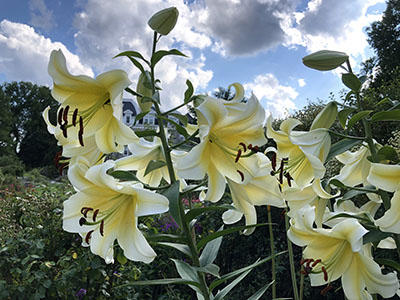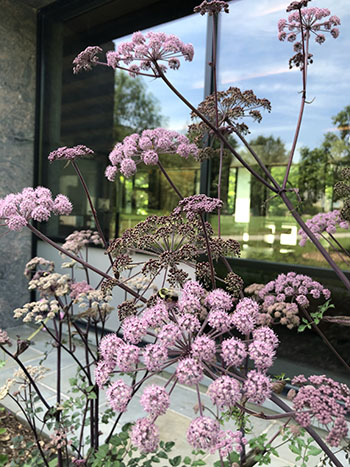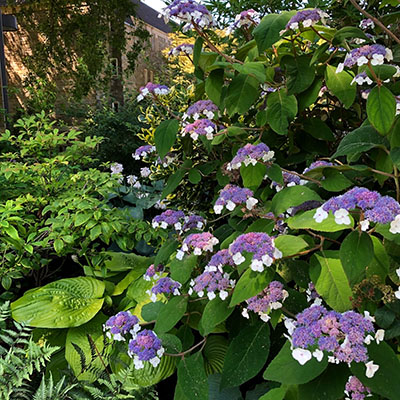
Plants of the Week: July 20

Gardens need more lilies! But which variety should you choose? Orienpet lilies, often listed as OT lilies, are the result of crossing oriental lilies with trumpet/aurelian lilies. The resulting cross provides the best of both worlds. Heavy, thick stems rise 3’ – 8’ and rarely need staking. Substantive, waxy flowers come in an array of colors and most exude an enticing fragrance. The bulbs boast increased disease resistance and greater longevity and durability as well more drought, heat, and cold tolerance compared to their parents. One standout in the Dean Bond Rose Garden is Lilium ‘Conca d’Or’. Lemon-yellow petals fading to white creates a rich two-toned effect. Established plants grow to 8’ in height, providing drama to the summer garden. Photo credit: J. Coceano

Annuals and biennials add whimsy to the landscape and help fill gaps between perennials and shrubs. Digitalis, Orlaya, and Angelica are a few that I wouldn’t be without. Relatively new to the market after causing mass hysteria at the Chelsea Flower Show is the sultry Angelica sylvestris ‘Ebony’ (woodland angelica). The stately biennial boasts the most incredible dark purple foliage and stems. For best growth provide an organically rich soil and even moisture. The pink flowers are a magnet for pollinators, especially bees. Seed does come true, meaning that seedlings will retain the rich, dark coloration though the odd seedling may have less intensely colored foliage. Removing flower heads before going to seed may help keep this plant perennial. Plantings can be found in the Isabelle Cosby Courtyard. Photo credit: J. Coceano

Hydrangea aspera ‘Macrophylla’ (large-leaved scabrous hydrangea) is an attention-grabber in the July garden. The deciduous shrub is best known for its large (up to 10” long) felted leaves and lace-cap flowers of pure white sterile florets surrounding an interior of tiny lavender-blue fertile flowers. The open habit combines well with other shrubs, particularly evergreens that provide a backdrop to highlight the flowers and leaves. Partial shade and consistent summer moisture is a must. Listed as hardy from zone 7-9, Hydrangea aspera ‘Macrophylla’ has been a reliable performer in Terry Shane Teaching Garden. Photo credit: J. Coceano





Virginia Parry
Posted at 16:35h, 30 JulyVisual yuminess! Thanks!
Becky Robert
Posted at 08:06h, 31 JulyWe totally agree! A walk in the garden is always a great mental break.
Sincerely,
Becky Robert
Scott Arboretum